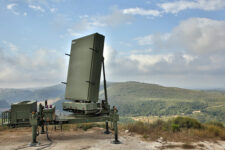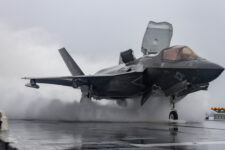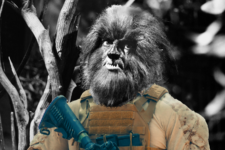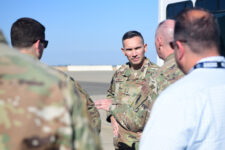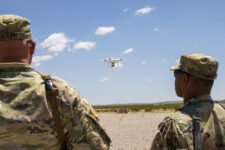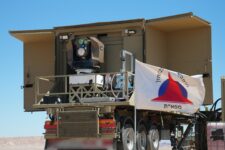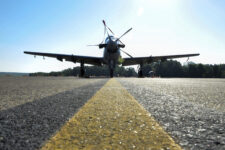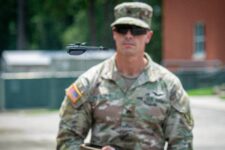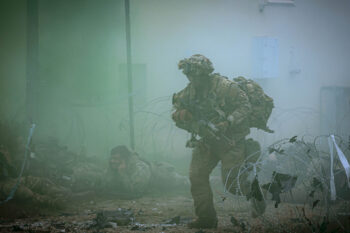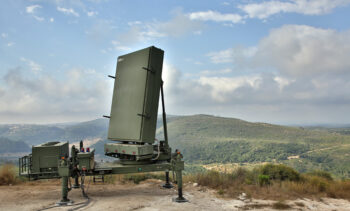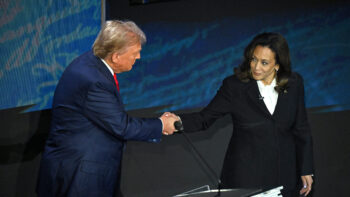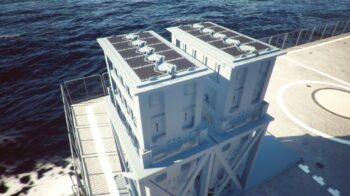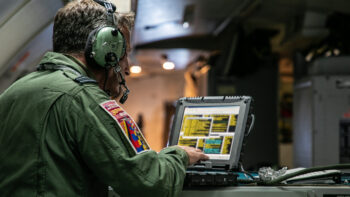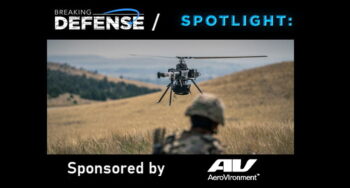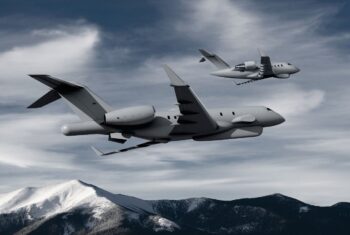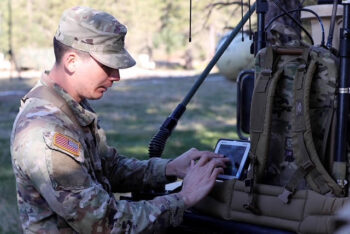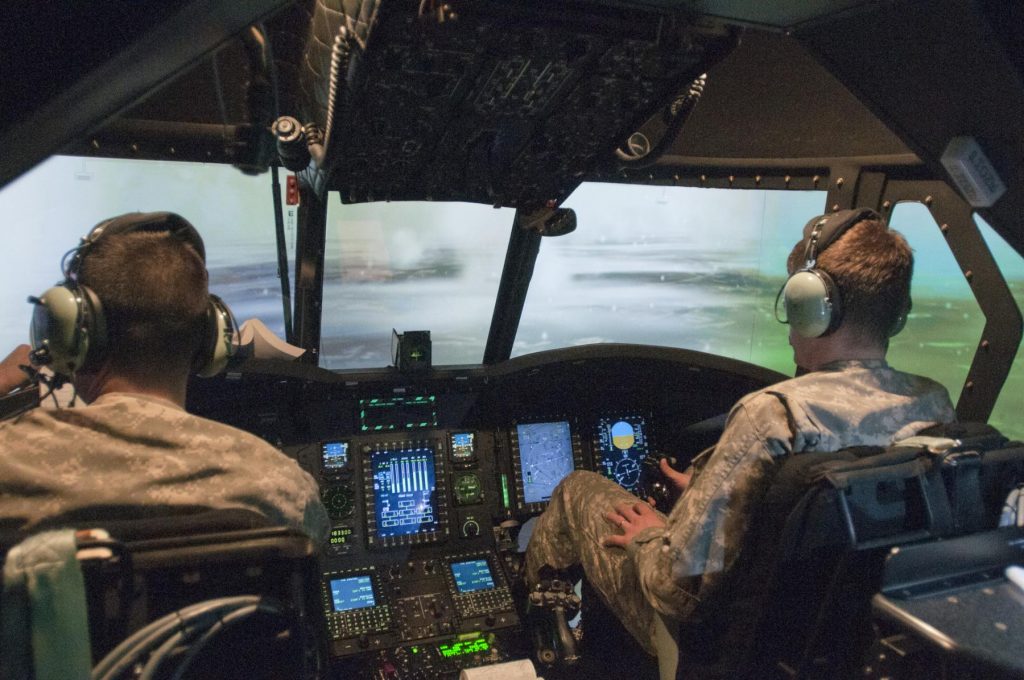
Army aviators train in a CH-47 Chinook simulator.
FORT BELVOIR: To train its troops for future wars, the US Army wants to build the ultimate video game. To get that game ASAP, the Army is blowing up the usual bureaucracy and borrowing high-speed development techniques from private sector software companies.
The service has already held two industry days on different aspects of the technology, with a third coming up in May, and combat soldiers have already tried out some industry offerings, said Maj. Gen. Maria Gervais. She’s the head of the Army’s Synthetic Training Environment effort, which was launched just last fall.
Some software will be ready to go on the Army’s new multi-function helmet-mounted display, the ENVG-B, when it enters service in December, Gervais said. A full augmented reality training system will be ready by 2021, complete with interior maps of buildings around the world and simulated civilians going about their day.
It’s not the typical Army process, Gervais told me in an impromptu interview on the sidelines of an Army tech demonstration here. Instead, she said, her Cross Functional Team — so-called because it pulls together experts from across the Army — is working intimately with industry in a tight cycle: “let me see the products you have, let’s give you feedback, let’s continue to develop this thing, over and over.”
Army Chief of Staff Mark Milley is set some ambitious goals for his Big Six modernization program. There is real uncertainty whether such things as robotic tanks and high-speed scout helicopters are possible on his timeline. But if there’s one area where a high-speed approach can work, it’s training simulations, where the Army can piggyback on the rapid development in commercial gaming.
Four Parts
Just to make it more complex, there are four interdependent pieces that Gervais is developing in parallel.
- The top priority is an augmented reality system to train soldiers on foot, the Soldier-Squad Immersive Environment. Augmented Reality goggles would superimpose virtual obstacles and enemies over the wearer’s field of view so troops can simulate any scenario at their own home base. (Imagine playing Pokémon Go while wearing Google Glasses and you’ll have the basic idea). This is something the Army’s never had before, and it could revolutionize infantry training.
- Collective trainers are used to train a vehicle crew to operate as a team (hence, “collective”): Like Air Force flight simulators, each replicates a single vehicle. But the Army’s current simulators are mostly products of the 1980s and 1990s, when each program — Humvees, M1 tanks, Apache helicopters, etc. — contracted for its own custom training systems. The result is a hodgepodge of often outdated and incompatible systems. The Army wants a new family of vehicle simulators it can easily network together so tank crews, pilots, and more can all practice combined arms tactics in the same digital exercise.
- The game engine is the underlying software that runs all the specific simulations. Commercial gaming has made dramatic advances from the two-dimensional, cartoony Pac-Man in 1980 to cinematic experiences like Call of Duty today, and the Army — much of which is still in the Pac-Man era — wants to take advantage of what that industry has to offer.
- All these playing pieces exist on top of the digital game board. Called One World Terrain, it is a global database of real-world terrain for use in training scenarios, replacing 57 different and often incompatible databases used by current Army simulators. One World Terrain has been described as “a military-grade Google Earth,” but it’s actually more ambitious that that, because the Army’s not satisfied with top-down satellite views.
Instead, to train for urban combat, the Army wants to include underground tunnels and the interiors of buildings. Some floor plans will be best-guess approximations, algorithmically generated based on typical building layouts — “we will get it about 90 percent right,” Gervais told me — but the Army is also working on software to automatically upload the schematics for specific buildings.
What’s more, after 17 years of guerrilla warfare, the Army knows better than to think it’ll fight in empty cities. That’s why the full version of One World Terrain will also include “patterns of life,” simulating vehicular traffic and civilians as they go about their daily routines — or deviate from them.
Iraq veterans, for instance, learned that when there were no children playing on the streets, they were probably walking into an ambush or roadside bomb. Gervais didn’t say if One World Terrain would emulate that level of detail, but it’s the kind of training that could save lives.
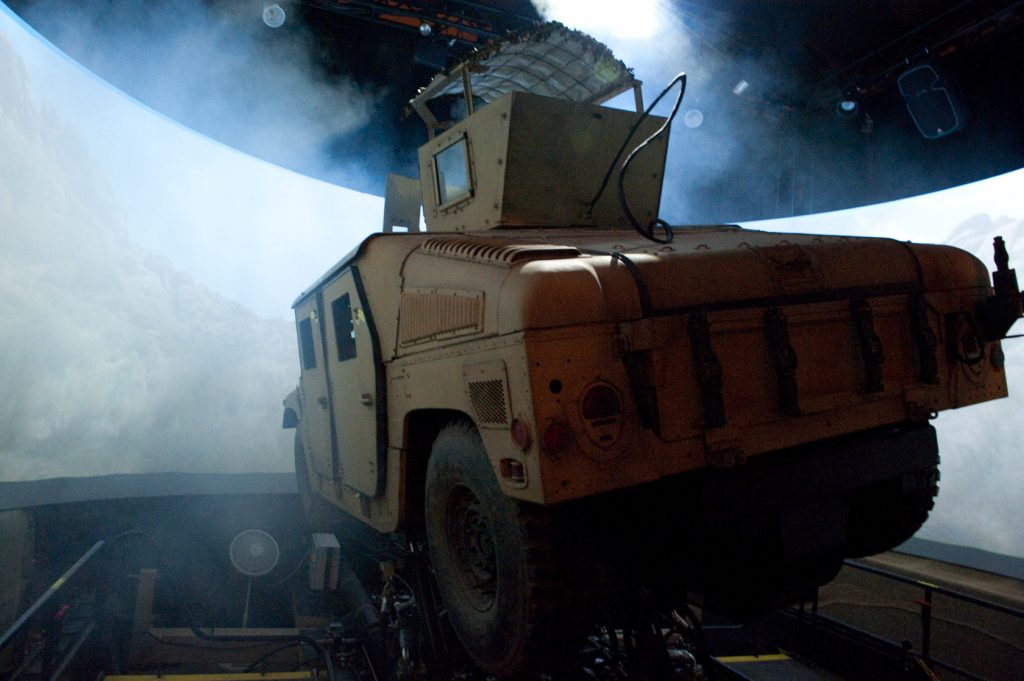
Army National Guard simulator for roadside bomb (IED) training.
Fast Cycle
That’s a long to-do list, and a typical Pentagon acquisition program would take five to 15 years to do it. But Gervais isn’t waiting for 100 percent solution: A company can bring a promising work in progress. Even if your initial white paper proposal isn’t accepted for a hands-on “user assessment” with soldiers, it still gets Army feedback and can refine its offering in hopes of getting picked for a later round.
Nor is the Army carving its requirements in stone. Just as industry is getting feedback from the Army on its offerings, the Army is getting feedback from industry on the art of the possible and cutting-edge developments it didn’t know to ask for.
How will those feedback loops play out in practice? Gervais outlined a tight schedule. It’s worth including past events to get a sense of how fast this is happening.
- September 2017: Gervais’s team holds their first industry day, seeking industry input on One World Terrain and collective trainers (i.e. vehicle simulators).
- October: Army Chief of Staff Mark Milley announces the Army’s Big Six modernization priorities and the eight Cross Functional Teams working on them (one for each of the Big Six, plus two for fundamental technical issues affecting all six), one of which is Gervais’s CFT.
- December: The Army officially asks industry for white papers proposing solutions for One World Terrain and vehicle trainers.
- February 2018: Gervais’s team holds its second industry day, focusing on the Soldier-Squad Immersive Environment.
- March 2018: One World Terrain & Collective Trainer User Assessment — Army technical experts and combat soldiers try out equipment from seven vendors, chosen from over 40 white paper proposals. (Companies not accepted for this round can still try for a later one).
- May: Gervais’s team will hold their third industry day, focusing on the game engine.
- July: Soldier-Squad Immersive Environment will hold its first user assessment. This time, companies will even help the Army write the formal “statement of need” for the effort. Traditionally, “I’d develop it and throw it out to them and then they’d give me feedback,” Gervais told me. “Now we’re all sitting down together, they’re going to help me develop it…..Industry’s really excited about that.”
- December: Tentative fielding date for the ENVG-B, a combination of night vision optic, targeting scope, and navigational aid. It will come with the initial version of One World Terrain: I may not have all the inside of buildings yet,” Gervais said, “but for the most part, they’ll have the basic … terrain that you can pull down from anywhere in the world.”
